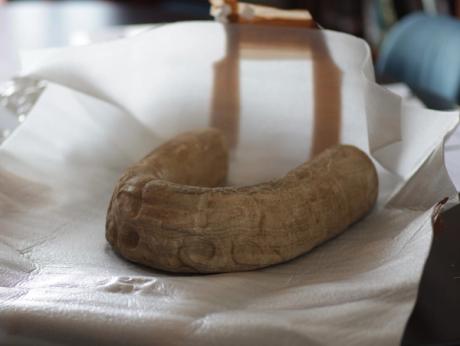
An ornate stone yoke that may have been worn by players of ancient Mesoamerican ball games has been returned to Mexico after officials intervened there to prevent the artifact from being sold at an Austrian auction house, a announced the Mexican government.
The yoke, made from sedimentary stone, is believed to have been made on the Gulf Coast during the Mesoamerican Classic period (400 CE-900 CE) in the Veracruz Central Classic style. It was recovered by the Mexican Embassy in Austria with the help of the Mexican Ministry of Foreign Affairs and Ministry of Culture, and the National Institute of Anthropology and History (INAH) in Mexico City.
The yoke had been offered for sale at an auction house in Austria before authorities intervened to halt the sale, according to a statement of the Mexican government.
Experts believe that the stone inserts were meant to represent the hip protectors worn by players during Mesoamerican ritual ball games, although it is unlikely that those with intricate designs were ever used by players during matches. . They may have served as trophies or used as ceremonial offerings.
Mexico has pushed for the return of thousands of archaeological objects since President Andrés Manuel López Obrador took office, making repatriation a foreign policy priority. His administration launched the social media hashtag #MiPatrimonioNoSeVende (“My heritage is not for sale”) as part of a broader restitution campaign.
In April, Mexican Foreign Secretary Marcelo Ebrard announced a one ton carved Olmec statue dating back thousands of years would be returned to Mexico after spending seven decades in the United States. The previous month, Italy returned 43 items to Mexico that had been recovered by Italian police. Last December, the Netherlands returned 223 artifacts to Mexican authorities.
